The southern region of Japan, Kyushu, is a treasure trove of natural wonders that often go unnoticed. However, these wonders are a sight to behold and should be on every traveler’s list. Don’t miss out on the opportunity to explore the many exquisite sights that Kyushu has to offer.
With its rich tapestry of landscapes ranging from misty mountains to lush valleys, Kyushu is a true hidden gem that beckons adventurers, nature enthusiasts, and wanderers alike. Amidst this breathtaking backdrop, one natural spectacle stands out prominently – waterfalls.
These cascades of water, gracefully tumbling from great heights and meandering through verdant forests, hold a profound significance in Kyushu’s scenery and culture, painting the region with tranquility and wonder.
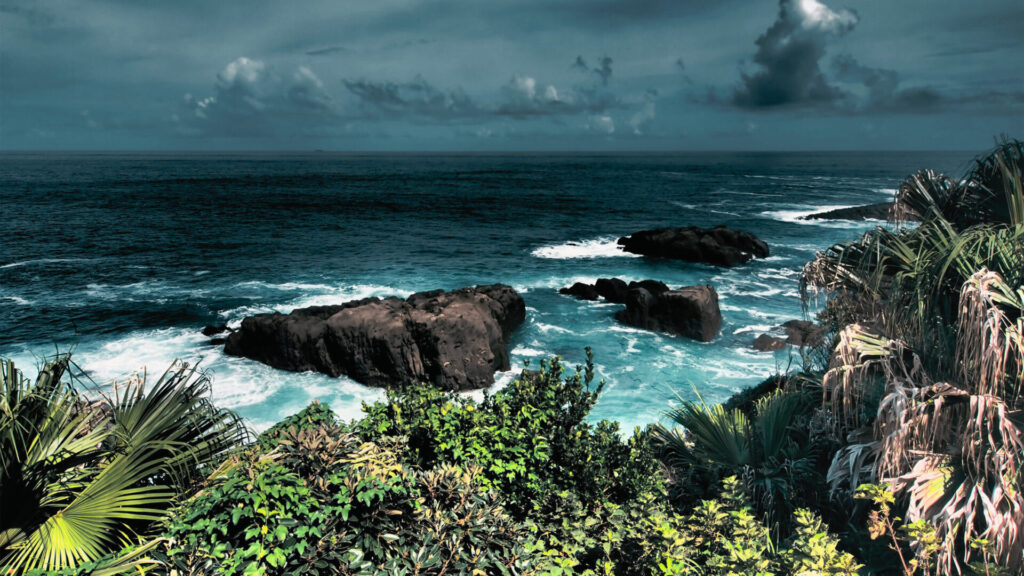
The Enchanting Appeal of Kyushu’s Waterfalls
While venturing through Kyushu’s finest waterfalls, we can discover their breathtaking beauty and significant cultural and ecological value. These waterfalls are not merely natural formations; they are living symbols of the delicate balance between nature and human existence, a testament to the interconnectedness that defines this enchanting region.
Join us as we dive into the heart of Kyushu’s waterfall wonderland, delving into the stories, the beauty, and the awe-inspiring splendor that awaits at every turn.
With each step, we’ll discover how waterfalls have sculpted the landscapes, shaped the local communities, and nurtured an appreciation for the world around us. From the hidden gems nestled amidst ancient forests to the towering cascades that command attention, Kyushu’s waterfalls offer a sanctuary for the curious traveler and the introspective wanderer.
Bring along your sense of adventure and your camera as we embark on a journey to immerse us in the breathtaking beauty of Kyushu’s most impressive waterfalls. Each drop of water tells a unique story; every view is a masterpiece waiting for your discovery.
Kyushu, the southernmost of Japan’s four main islands, is adorned with natural wonders that captivate the imagination. The waterfalls stand out among its treasures as enchanting expressions of nature’s power and beauty.
In this exploration, we delve into the allure of waterfalls, emphasizing Kyushu’s unique geological features that give birth to numerous cascading wonders. Additionally, we introduce the concept of waterfall chasing as a rewarding outdoor activity that profoundly connects enthusiasts with nature.
The Allure of Waterfalls in Nature
Soothing Effects on the Senses
Waterfalls possess an inherent ability to soothe the senses. The rhythmic sound of water crashing against rocks creates a symphony that lulls the mind into tranquility. This auditory experience, combined with the visual spectacle of cascading water and the crisp, refreshing air in waterfall-laden environments, provides a therapeutic escape from the hustle and bustle of daily life.
Aesthetic Beauty and Natural Power
The aesthetic beauty of waterfalls lies not only in their visual appeal but also in their raw power. The force with which water descends from great heights is a testament to nature’s relentless energy. Each waterfall tells a unique story, carved into the landscape over centuries, creating a tapestry of shapes and sizes that mesmerize onlookers.
Kyushu’s Unique Geological Features
Volcanic Activity
Kyushu’s geological composition is marked by volcanic activity, creating a terrain rich in diverse landscapes. Numerous volcanoes and hot springs contribute to the formation of waterfalls. The combination of volcanic rocks and steep slopes provides an ideal setting for water to cascade dramatically, forming splendid waterfalls that dot the region.
Abundant Rainfall
The abundant rainfall in Kyushu, particularly during the rainy season, further enhances the waterfall landscape. The precipitation feeds the rivers and streams, ensuring a continuous flow over the cascades. This seasonal variation adds to the dynamic nature of Kyushu’s waterfalls, making each visit a unique experience.
Waterfall Chasing as a Rewarding Outdoor Activity
Connecting with Nature
Waterfall chasing transcends the typical outdoor adventure. It becomes a journey of connection with nature, where enthusiasts immerse themselves in the beauty and energy of these natural wonders. The act of seeking out waterfalls fosters a deep appreciation for the environment and encourages a sense of stewardship for preserving these delicate ecosystems.
Exploration and Discovery
Kyushu’s diverse topography offers waterfall chasers a plethora of options for exploration. Each expedition unveils new discoveries, from hidden gems tucked away in lush forests to majestic falls framed by volcanic landscapes. The thrill of stumbling upon lesser-known waterfalls adds an element of excitement to this outdoor pursuit.
Physical and Mental Wellness
Engaging in waterfall chasing promotes physical activity as enthusiasts navigate trails and rocky terrains to reach these secluded spots. Beyond the physical benefits, the meditative qualities of being in nature and witnessing the awe-inspiring spectacle of waterfalls contribute to mental well-being, offering a holistic outdoor experience.
When to visit Kyushu’s waterfalls
Spring (March to May)
As spring blankets Kyushu, waterfalls come to life with the melting snow and blooming flora. Explore the enchanting scenes of water cascading amidst cherry blossoms, creating a picturesque fusion of pink and white. The gentle weather during this season makes it ideal for hiking and immersing yourself in the rejuvenating embrace of nature.
Summer (June to August)
Kyushu’s waterfalls reach their peak beauty during the summer months, with lush greenery surrounding these cascades. The vibrant foliage provides a striking contrast to the crystal-clear waters. Visit these waterfalls to escape the summer heat, embark on refreshing hikes, and experience the soothing sounds of water echoing through the verdant landscapes.
Autumn (September to November)
As autumn paints Kyushu in warm hues, the waterfalls become framed by a red, orange, and gold tapestry. The cooler temperatures create an inviting atmosphere for exploration, and the surrounding foliage transforms into a vivid display of seasonal beauty. Take leisurely walks to witness the waterfalls amidst the rich palette of fall colors.
Winter (December to February)
While winter may bring a touch of frost to Kyushu, specific waterfalls maintain their allure. Witness the striking contrast of icy landscapes against the flowing waters, creating a serene and magical ambiance. The quieter winter months offer a unique opportunity to appreciate the subtle beauty of frozen cascades.
Local Hangout Spots
Discover the local flavors and culture surrounding Kyushu’s waterfalls:
Yufuin Onsen: After a day of waterfall exploration, unwind at Yufuin Onsen, known for its hot springs and scenic views of Mount Yufu. Immerse yourself in the relaxing waters and savor the local delicacies.
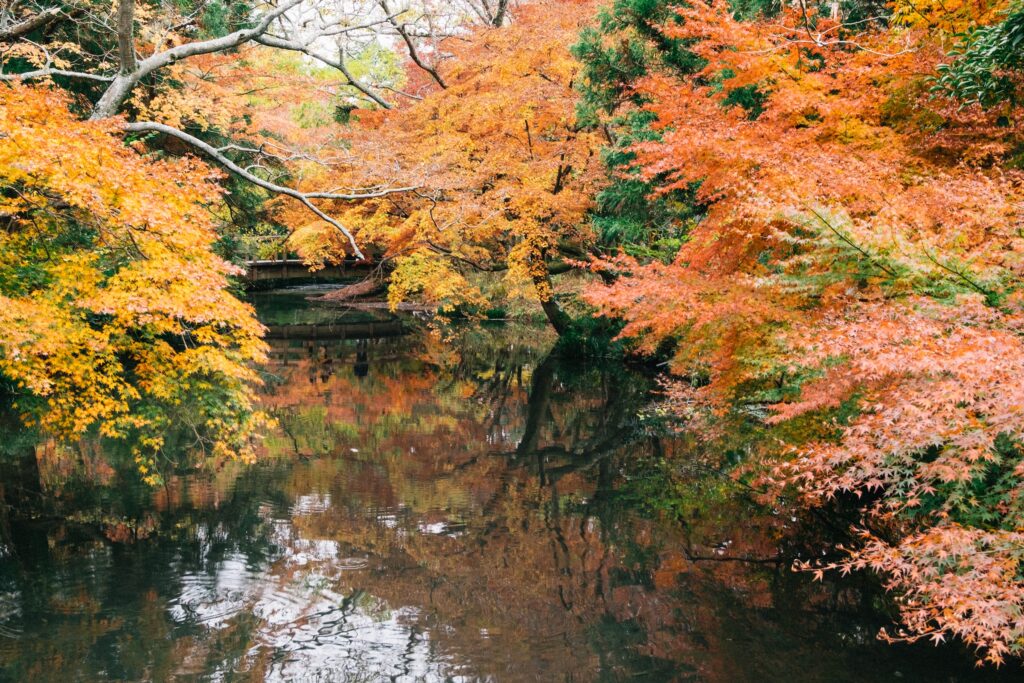
Oita City: Explore the vibrant streets of Oita City, a hub of local cuisine. Indulge in regional specialties like toriten (chicken tempura) and visit local izakayas to taste Kyushu’s culinary delights.
Nagasaki Lantern Festival: The Nagasaki Lantern Festival is a must-see event near Nagasaki during winter. Don’t miss out on this enchanting experience! Witness the city illuminated with vibrant lanterns, adding a touch of magic to your Kyushu experience.
Tips for Traveling to Kyushu’s Waterfalls
- Sturdy Footwear: Given the diverse terrain around waterfalls, wear comfortable and sturdy footwear suitable for hiking and walking on uneven paths.
- Rain Gear: As waterfalls often generate mist, especially during rainy seasons, carry rain gear to stay dry and protect your camera equipment.
- Nature Etiquette: Respect nature by following designated paths and guidelines. Avoid littering and maintain a harmonious relationship with the environment.
Top Attractions Close To The Waterfalls In Kyushu
- Oita Fragrance Museum (Near Harajiri falls):
- Location: Oita, Beppu
- Highlights: Engage your senses in a unique exploration of scents, understanding the intricate art of fragrance creation. Explore exhibits that trace the history of perfumery, showcasing antique perfume bottles, vintage advertisements, and the evolution of fragrance-making techniques. Participate in hands-on workshops where you can create your own signature fragrance. Learn about the ingredients, blending techniques, and the personalized art of crafting a scent.
- Inazumi Underwater Cave (Near Harajiri falls):
- Location: Oita, Bungo-ono City
- Highlights: Discover the wonders of the Yabekyo Nature Hiking Trail, located in proximity to the captivating GorogaTaki Falls. Immerse yourself in nature as you traverse this scenic trail, surrounded by lush greenery and the soothing sounds of the environment. The trail offers a serene escape for hiking enthusiasts, providing an ideal complement to the majestic GorogaTaki Falls.
- Tsūjun Bridge (Near GorogaTaki Falls):
- Location: Kumamoto-Ken Yamato-Cho
- Highlights: Visit the Tsūjun Bridge, a charming attraction in close proximity to the GorogaTaki Falls. This picturesque bridge not only enhances your exploration of the natural beauty surrounding the waterfall but also offers stunning vistas of the nearby landscapes. Take in the tranquility and scenic charm as you incorporate Tsūjun Bridge into your adventure near GorogaTaki Falls.
- Daikanbo Overlook (Near Nabegataki Falls)
- Location: Kumamoto-ken, Aso
- Highlights: Ascend to Daikanbo Overlook, a vantage point near GorogaTaki Falls, offering breathtaking panoramas of the surrounding mountains and valleys. Experience the natural grandeur of the region as you gaze upon the picturesque landscapes, creating an unforgettable addition to your exploration near GorogaTaki Falls.
- Tsuetate Onsen (Near Nabegataki Falls)
- Location: Kumamoto-Ken, Aso
- Highlights: Indulge in tranquility at Tsuetate Onsen, located in close proximity to GorogaTaki Falls. This hot springs haven provides a perfect retreat, allowing you to unwind in therapeutic waters amid the serene ambiance of the surrounding nature. Enhance your visit to GorogaTaki Falls with a relaxing detour to Tsuetate Onsen, completing your holistic experience in the area.
- Nanatsugama Caves (Near Mikaeri-no-Taki Falls)
- Location: Saga-ken, Karatsu
- Highlights: Venture into the enchanting Nanatsugama Caves, a natural wonder shaped by ancient lava flows. Marvel at the seven coastal caves carved by the relentless force of the ocean. Absorb the dramatic seascape and witness the waves harmonizing with the unique rock formations. Explore the coastal cliffs for breathtaking views of the Pacific.
- Kazenomieru Oka Park (Near Minainotaki Waterfall)
- Location: Saga-ken, Karatsu
- Highlights: Immerse yourself in the tranquility of Kazenomieru Oka Park, offering panoramic vistas of the coastline. Wander along scenic walking paths surrounded by open green spaces. Breathe in the refreshing sea breeze as you take in the breathtaking views of the Pacific Ocean. Capture the beauty of the coastal landscape from various observation points.
- Boat Ride in the Gorge: (Near Minainotaki Waterfall)
- Location: Gokase River, Takachiho Gorge, Miyazaki Prefecture, Japan
- Highlights: Embark on a boat ride along the Gokase River, navigating the pristine waters that flow through the heart of Takachiho Gorge. The boat ride provides an intimate encounter with the towering cliffs and the natural beauty that envelopes the gorge.
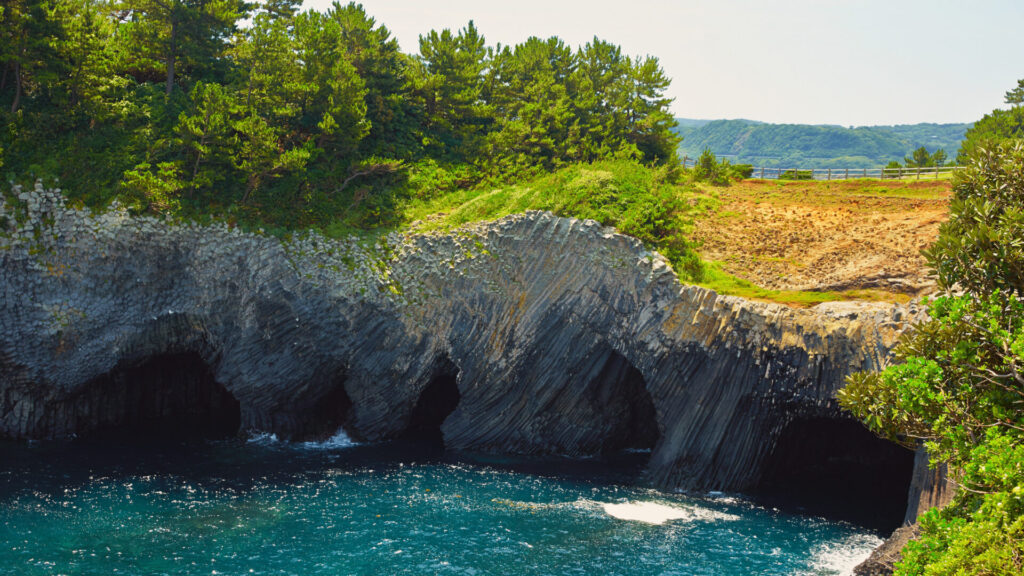
Day Trips from Kyushu’s Waterfalls
Mount Aso: Extend your journey with a day trip to Mount Aso, an active volcano with a massive caldera. Enjoy panoramic views, explore hiking trails, and experience the unique landscapes shaped by volcanic activity.
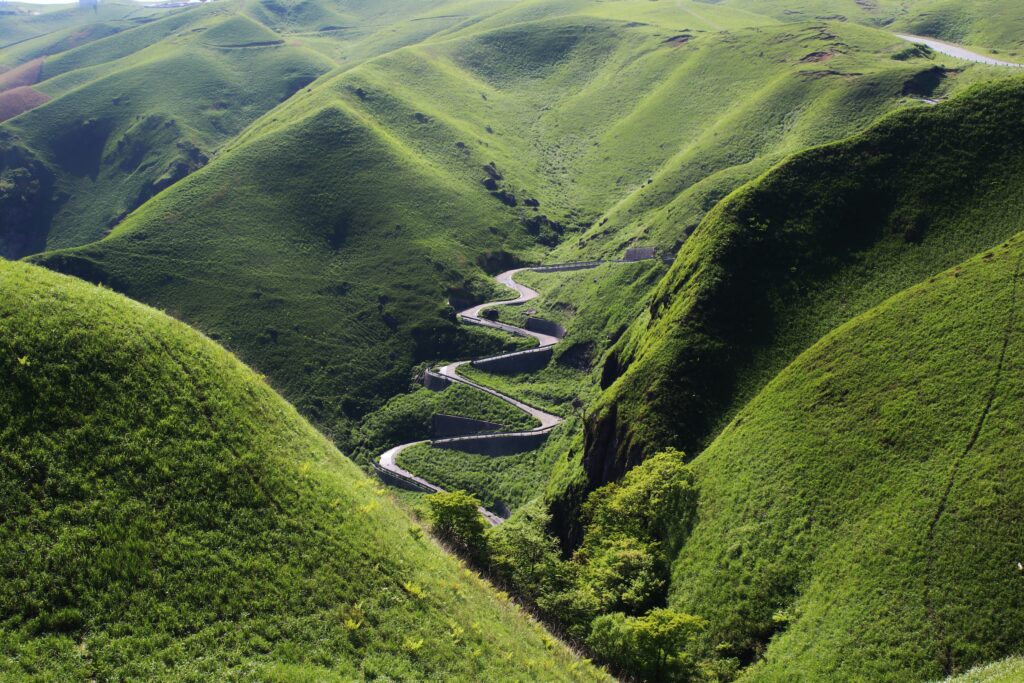
Beppu Hot Springs: Head to Beppu for a relaxing day at numerous hot springs. Unwind in the therapeutic waters and explore the diverse range of baths offered in this renowned hot spring town.
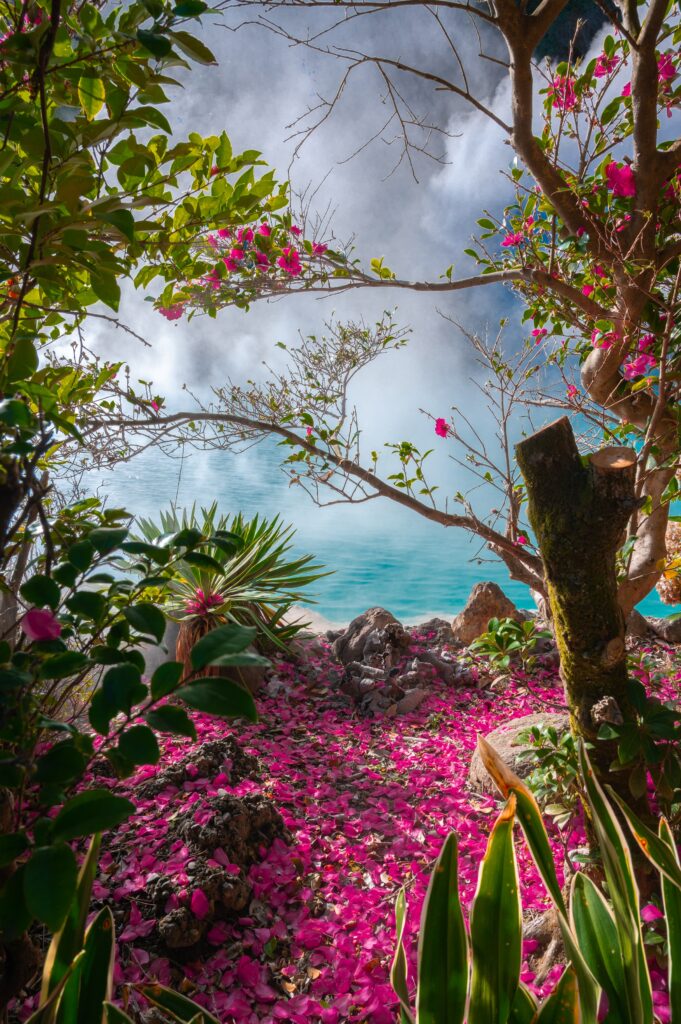
Kumamoto Castle: Delve into history with a visit to Kumamoto Castle. Explore the well-preserved castle grounds, gardens, and historical artifacts, providing insight into Japan’s feudal past.
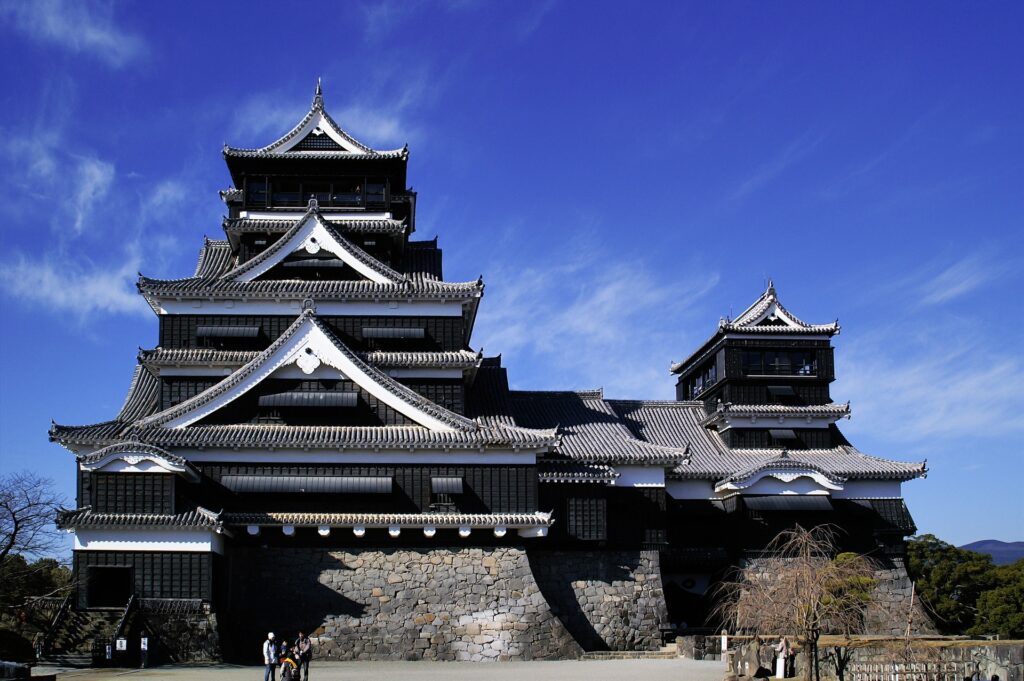
Day Trip from Harajiri falls:
- Destination: Oita, Bungoono
- Highlights: Mt. Katamuki is known for its scenic beauty and hiking trails. Visitors can enjoy panoramic views from the summit and explore the surrounding natural landscapes. The mountain offers a great outdoor experience for nature enthusiasts and hikers. Yujaku Park is a popular recreational area with lush greenery and various amenities. It may feature walking paths, gardens, playgrounds, or other attractions. Visitors can relax in the peaceful environment, engage in outdoor activities, and enjoy the park’s facilities.
Day Trip from GorogaTaki Falls:
- Destination: Aso Caldera
- Highlights: Explore the active Aso volcano, visit Aso-Kuju National Park, take a scenic drive through the Aso Milk Road.
Day Trip from Nabegataki Falls:
- Destination: Kurokawa Onsen
- Highlights: Relax in Kurokawa Onsen’s hot springs, explore the charming streets, visit nearby Ryumon-no-taki Waterfall.
Day Trip from Mikaeri–no–Taki:
- Destination: Oita
- Yufuin (Approx. 1 hour):
- Highlights: Relax in the tranquil hot spring town of Yufuin. Take a leisurely stroll around Lake Kinrinko, visit art museums, and soak in the rejuvenating waters of one of Yufuin’s many onsens.
- Beppu (Approx. 1 hour and 30 minutes):
- Highlights: Discover the hot spring capital of Japan, Beppu. Visit the “Hells of Beppu,” a collection of colorful and unique hot springs. Enjoy a relaxing bath in one of Beppu’s numerous public baths.
Day Trip from Minainotaki Waterfall:
- Destination: Takachiho Gorge
- Highlights: Explore the scenic gorge, take a boat ride on the Gokase River, visit Amano Iwato Shrine.
Explore Hidden Gems: Unveiling Kyushu’s Secret Treasures
Yakushima Island: Venture to Yakushima, an island south of Kyushu known for its ancient cedar forests. Discover the mystical Jomon Sugi, one of the oldest cedar trees in Japan, and immerse yourself in the island’s natural wonders.
Takachiho Gorge: Witness the mesmerizing beauty of Takachiho Gorge, a scenic canyon with sheer cliffs and a flowing river. Take a rowboat upstream to experience the gorge from a unique perspective.
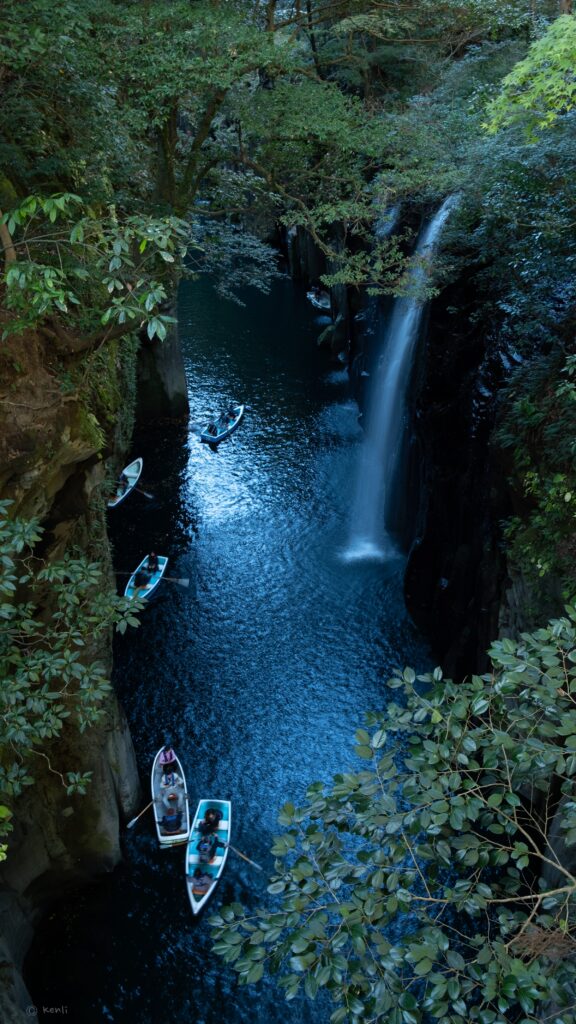
Usuki Stone Buddhas: Immerse yourself in the awe-inspiring beauty of the Usuki Stone Buddhas, a rare archaeological wonder showcasing more than 60 intricately carved stone statues that date back to the Heian period. Discover this hidden gem’s rich historical and cultural significance, and marvel at the intricate details of each sculpture that will leave you spellbound.
Culinary Delights in Kyushu: A Feast for the Senses
Yatai Street Food in Fukuoka: Indulge in Fukuoka’s vibrant street food scene by visiting its famous yatai stalls. Try local specialties like Hakata ramen, yakitori, and mentaiko (spicy cod roe).
Kumamoto Ramen: Delight your taste buds with Kumamoto ramen, known for its rich and savory tonkotsu (pork bone) broth. Sample this regional noodle dish at local ramen shops for an authentic culinary experience.
Sasebo Burger: If you find yourself in Sasebo, savor the iconic Sasebo Burger. This hearty burger, featuring a thick patty and unique toppings, has become a local specialty.
Things to Do in Kyushu’s Waterfall Wonderland: Enriching Your Nature Expedition
- Photography Excursion: Capture the breathtaking beauty of Kyushu’s waterfalls through a photography expedition. Experiment with different angles and lighting to immortalize these natural wonders.
- Hiking Trails: Embark on scenic hiking trails that lead you to the base or viewpoints of waterfalls. Discover the surrounding landscapes and enjoy the therapeutic benefits of nature.
- Cultural Encounters: Immerse yourself in local culture by participating in events and festivals celebrating the connection between communities and nature. Engage with locals to gain insights into Kyushu’s rich traditions.
- Nature Retreats: Extend your stay in Kyushu by opting for nature retreats or accommodations amid lush landscapes. Experience the tranquility of the region and rejuvenate your senses.
Kyushu’s waterfalls promise a symphony of nature’s grandeur, inviting you to explore, discover, and connect with the essence of each season. Whether you’re captivated by the vibrant hues of spring, the lush greenery of summer,
Here it is a keytakeaway table of our best picks
| Waterfall | Key Takeaway |
|---|---|
| Harajiri falls | As one of Japan’s top 100 waterfalls, Harajiri Falls offers a mesmerizing blend of power and tranquility. Visitors can witness the majestic flow of water plunging dramatically into the basin below, creating a picturesque setting that captivates the senses. |
| Goroga Taki Falls | Immerse yourself in the tranquil ambiance of Goroga Taki Falls, surrounded by the serenity of the forest. A hidden gem offering a peaceful escape and stunning natural scenery. |
| Nabegataki Falls | Experience the power and grace of Nabegataki Falls (also known as Kurokawa Falls). The waterfall’s impressive volume and the surrounding rocky landscape create a captivating spectacle. |
| Mikaeri–no–Taki | Mikaeri-no-Taki, the Looking Back Waterfall, enchants visitors with its unique illusion of water defying gravity. The journey to Mikaeri offers a serene exploration of unspoiled landscapes, emphasizing the importance of responsible tourism in preserving the natural beauty that makes this destination a true hidden gem in the heart of Japan. |
| Minainotaki Waterfall | Experience the mythical charm of Minainotaki Waterfall, a waterfall steeped in Japanese folklore. The dynamic flow of water against the backdrop of lush greenery makes it a captivating sight. |
Where To Stay In Kyushu
1. Amakusa Tenku No Fune
- Type: Ryokan
- Location: 5984-2 Matsushimamachi Aitsu, Kamiamakusa, Kumamoto 861-6102
- Phone: 0969-25-2000
- Highlights: Perfect base for exploring the region’s Christian history, beautiful natural surroundings, and enjoying local cuisine.
- Website: Amakusa Tenku No Fune
2. Hotel Nikko Huis Ten Bosch
- Type: Hotel
- Location: 6 Huis Ten Bosch Machi, Sasebo, Nagasaki 859-3243
- Phone: 0956-58-0211
- Highlights: Elegant entrance decorations, superior rooms with contemporary European theme, proximity to Huis Ten Bosch attractions.
- Website: Hotel Nikko Huis Ten Bosch
3. Nishitetsu Hotel Croom Hakata
- Type: Hotel
- Location: Address: 1 Chome-17-6 Hakata Ekimae, Hakata Ward, Fukuoka, 812-0011
- Phone: 092-413-5454
- Highlights: Modern hotel, comfortable beds, strong air conditioning, spa area, free massage chair, convenient location.
- Website: Nishitetsu Hotel Croom Hakata
4. Suginoi Hotel
- Type: Onsen Hotel
- Location: Address: 〒874-0823 Oita, Beppu, 観海寺1
- Phone: 0977-24-1141
- Highlights: Onsen and heated pool with great views, sunrise views from the onsen, excellent restaurant with a focus on quality beef and goose liver.
- Website: Suginoi Hotel
5. Hotel Nikko Fukuoka
- Type: Hotel
- Location: 2 Chome-18-25 Hakata Ekimae, Hakata Ward, Fukuoka, 812-0011
- Phone: 092-482-1111
- Highlights: Located near shops, train station, and subway, spacious rooms with large desk space, convenient proximity to restaurants and food stalls.
- Website: Hotel Nikko Fukuoka
6. Hotel JAL City Fukuoka Tenjin
- Type: Hotel
- Location: 2 Chome-12-5 Daimyo, Chuo Ward, Fukuoka, 810-0041
- Phone: 092-718-7558
- Highlights: Convenience stores nearby, walking distance to the busy part of Tenjin, great rates for loyalty program members.
- Website: Hotel JAL City Fukuoka Tenjin
7. Richmond Hotel Fukuoka Tenjin
- Type: Hotel
- Location: 4 Chome-8-25 Watanabedori, Chuo Ward, Fukuoka, 810-0004
- Phone: 092-739-2055
- Highlights: Convenient location, very good service, expected value for money, suitable for exploring the town.
- Website: Richmond Hotel Fukuoka Tenjin
The Best Food in Kyushu
Hakata Ramen (Fukuoka)
The taste of Hakata ramen on the northern shore of Kyushu in Fukuoka is popular not only within Kyushu but also across Japan. The creamy white broth is made from pork bones, as pork—and kurobuta or black pork, in particular—is one of the famous agricultural products of Kyushu.
The bones are simmered for hours until they become gelatin; then the soup is topped with chopped scallions and tender slices of char-siu pork. Another signature trait of Hakata ramen is its thin straight noodles, cooked al dente, which will have you begging for a second helping, or as it’s known in Japanese, kaedama.
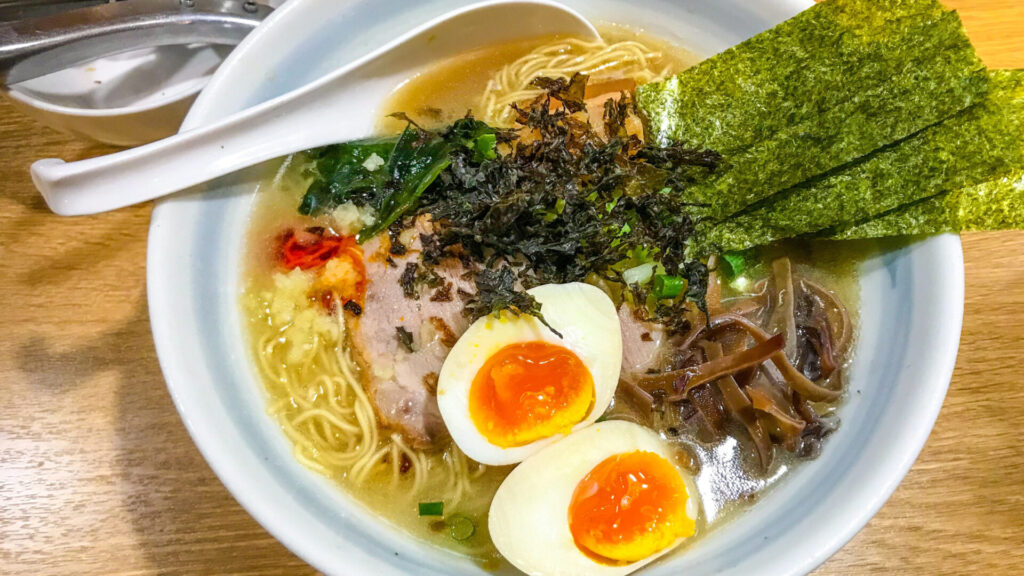
Champon (Nagasaki)
Champon is a specialty dish from the Nagasaki region on the northwestern coast of Kyushu, where it was made for Chinese students who were studying there during the Meiji Era. Like ramen, champon is a noodle dish featuring meat, vegetables and broth; but unlike ramen, champon’s noodles are cooked directly in the soup.
The robust taste is achieved by frying meat and vegetables together and then adding the broth, thick egg noodles, kamaboko fish cake, and other seafood. It’s a hearty and affordable dish that embodies the true taste of Nagasaki.

Chicken Nanban (Miyazaki)
The signature dish of Miyazaki located on Kyushu’s southeastern coast is chicken nanban. Made using some of the region’s famed free-range chicken, this fried piece of heaven is first coated in sweet and tangy vinegar, then topped off with tartar sauce.
The dish originated in Miyazaki family restaurants and has become so popular that it can now be found everywhere from izakaya bars to convenience stores throughout Japan. While chicken nanban may not be gourmet, it is unquestionably delicious and deserves its place as a regional food turned national Japanese sensation.

Sasebo Burger (Nagasaki)
Hamburgers may be the last item one would expect to be a specialty food in Kyushu. However, as Nagasaki’s Sasebo City has long been home to a U.S. naval base, it should come as no great surprise that Nagasaki has a tradition of old-fashioned, handmade burgers going back several decades.
Although there is no official Sasebo burger recipe, some things never change: Sasebo burgers are always generously huge, lip-smackingly greasy and lovingly made to order from local ingredients. Popular varieties include hearty burgers heaped with bacon and fried eggs, as well as massive ground chicken burgers made with poultry from the Kyushu region.
Motsunabe (Fukuoka)
Motsunabe, which originated in the Hakata region, is a hot pot of beef or pork tripe. While its main ingredient may sound intimidating to some, don’t let the ingredients get in the way of trying this tasty cuisine. Being high in protein and low in calories, motsunabe is not only delicious but also extremely healthy.
In Fukuoka, the tripe is cut into delicate morsels and simmered with cabbage and nira garlic chives until tender, then sprinkled with red chili pepper. Motsunabe is an essential part of Kyushu food culture, especially in the winter, and has gained popularity across Japan in recent years as a dish that helps keep away the cold. Just one taste and you’ll see why.

Tonkatsu (Kagoshima)
Kagoshima, on the southwestern tip of Kyushu, is the most famous producer of Kyushu’s kurobuta pork, and no dish highlights this better than tonkatsu pork cutlets. Tonkatsu from this region is especially delicious, with succulent bites of meltingly rich pork coated in crisp panko bread crumbs.
The two main types of tonkatsu are hire (pork fillet) or rosu (pork loin), with hire being the leaner cut of meat and rosu the juicier cut with more marbling. Tonkatsu is best enjoyed with a bit of karashi yellow mustard and a fruity Worcestershire sauce-based tonkatsu sauce that is truly a cut above the rest.
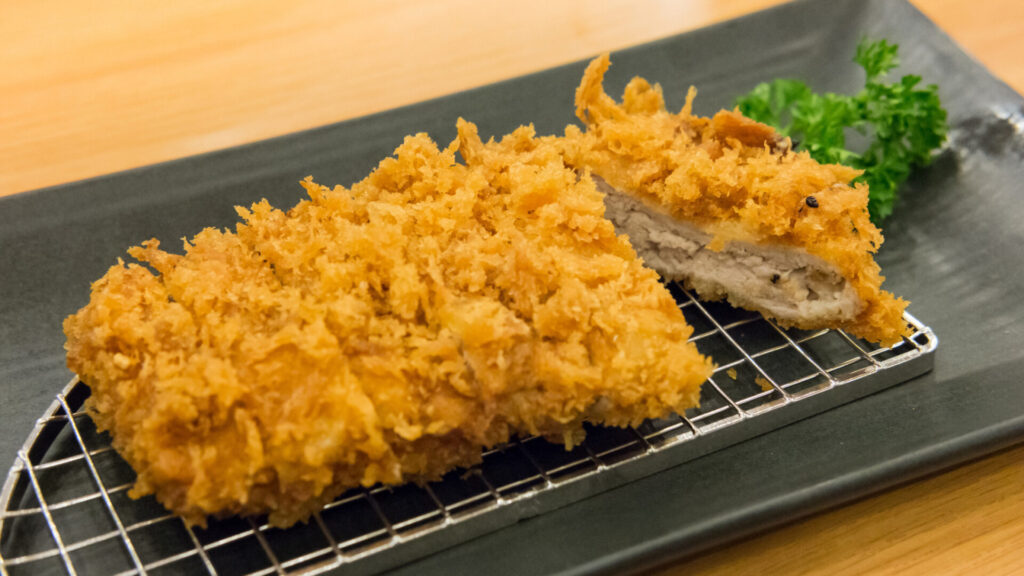
Mentaiko (Fukuoka)
A spicy cod roe marinated in red pepper, mentaiko was originally a Korean delicacy that came to Japan due to Fukuoka’s geographical closeness to mainland Asia. Mentaiko from Fukuoka has since become a regional specialty, known for its high quality and exceptional freshness, and is now a popular souvenir to take home from this area.
It may be eaten raw, seared or mixed in as a topping that adds a rich, salty and spicy Japanese punch to any dish. Try the wonders of mentaiko pizza and pasta, or even mentaiko potato salad—and never go back!
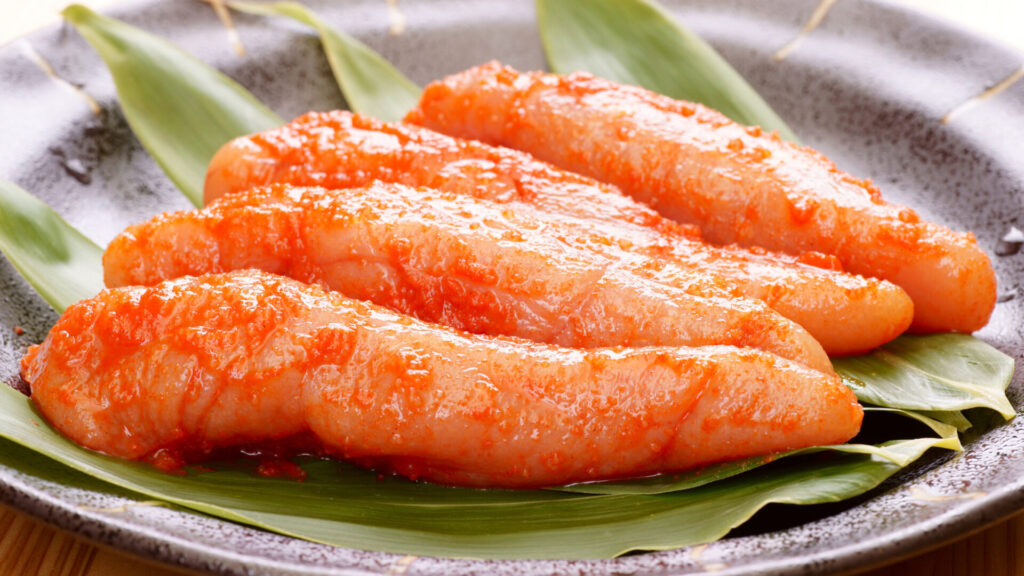
Ikinari Dango (Kumamoto)
Kumamoto, on the western coast of Kyushu, is well known for the ikinari dango, a steamed bun with bean jam and sweet potato filling. This delectable dumpling gets its name because it may be easily cooked ikinari or “at a moment’s notice”; it’s also a popular Kumamoto souvenir—that is if you can wait to chow down until after your trip!
Ikinari dango is created by cutting sweet potatoes into thick slices, slathering each one with sweetened azuki bean paste, and then wrapping them in mochi flour. Once finally steamed, the harmony of three distinct textures—the sweet potato, the bean paste and the mochi—comes together in every bite. You’ll have a ball eating this special dessert.
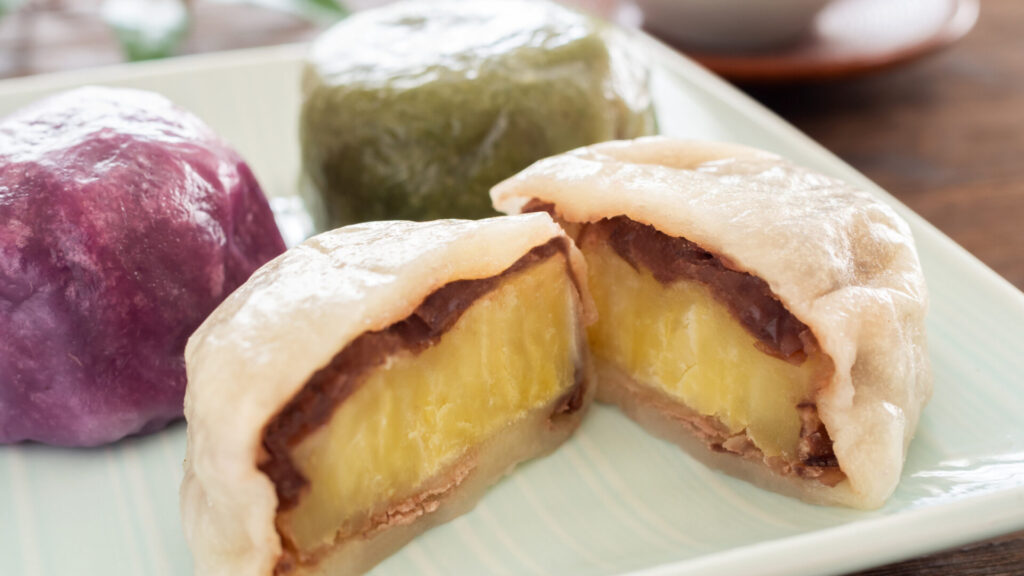
The Spectacular Waterfalls to Explore
The Beauty of Minainotaki Waterfall
As you embark on a journey through the scenic landscapes of Japan, one destination that promises to captivate your senses and leave an indelible mark on your memory is the enchanting Minainotaki Waterfall. Nestled in the heart of nature, this hidden gem invites travelers to witness the raw power and serene beauty of cascading water amidst lush greenery. Let’s delve into the allure of Minainotaki and uncover the secrets that make it a must-visit destination.
A Natural Masterpiece
Minainotaki, meaning “beautiful waterfall,” lives up to its name as it stands as a testament to the awe-inspiring beauty of nature. Located in a remote and pristine area, the waterfall is surrounded by dense forests, creating a tranquil atmosphere that is perfect for those seeking a retreat from the hustle and bustle of urban life.
The waterfall descends gracefully from a steep cliff, creating a mesmerizing display of water in motion. The clear, cool water flows over moss-covered rocks, adding an extra layer of magic to the scene. As you approach the falls, the sound of rushing water grows louder, heightening the anticipation of the spectacle that awaits.
Getting There: A Journey Worth Taking
While Minainotaki may be off the beaten path, the journey to reach this hidden paradise is an adventure in itself. Trails wind through the thick forest, offering hikers a chance to immerse themselves in the natural beauty that surrounds them. The trek to the waterfall is both challenging and rewarding, with each step unveiling new glimpses of the untouched wilderness.
Travelers can also choose to explore the nearby areas, discovering quaint villages and traditional Japanese architecture along the way. The journey to Minainotaki is not just about reaching the destination but savoring every moment of the expedition.
Seasons of Splendor
Minainotaki Waterfall undergoes a transformation with each passing season, ensuring that no two visits are the same. In spring, cherry blossoms bloom around the falls, creating a dreamlike setting that is perfect for photography enthusiasts. Summer brings lush greenery and a vibrant energy to the surroundings, while autumn dresses the landscape in a rich tapestry of red, orange, and gold hues.
Winter blankets Minainotaki in a serene layer of snow, turning the area into a tranquil wonderland. The contrast of the white snow against the dark rocks and evergreen trees is a sight to behold, making it a favorite destination for winter explorers.
Preserving Nature’s Bounty
As you revel in the beauty of Minainotaki, it’s crucial to recognize the importance of responsible tourism. Conservation efforts are in place to protect the delicate ecosystem surrounding the waterfall. Visitors are encouraged to follow designated trails, refrain from littering, and respect the natural habitat to ensure that Minainotaki remains a pristine sanctuary for generations to come.
In conclusion, Minainotaki Waterfall beckons intrepid travelers to embark on a journey of discovery and serenity. Whether you’re a nature lover, an adventure seeker, or someone in search of tranquility, Minainotaki promises an experience that transcends the ordinary—a symphony of water, rocks, and foliage that leaves an indelible mark on the soul.
Nabegataki Falls: The Hidden Gem Tucked Away in the Forest
Amid the dense foliage of Kyushu’s wilderness lies a secret place – Nabegataki Falls. This hidden gem beckons with its untouched beauty, offering a sanctuary of serenity and natural wonder.
A Secluded Journey
The journey to Nabegataki Falls is as much a part of the experience as the destination itself. A hiking trail winds through the forest, guiding you through a tapestry of greenery and dappled sunlight. As you make your way deeper into the heart of the wilderness, the distant sound of cascading water grows louder, hinting at the breathtaking sight that awaits.
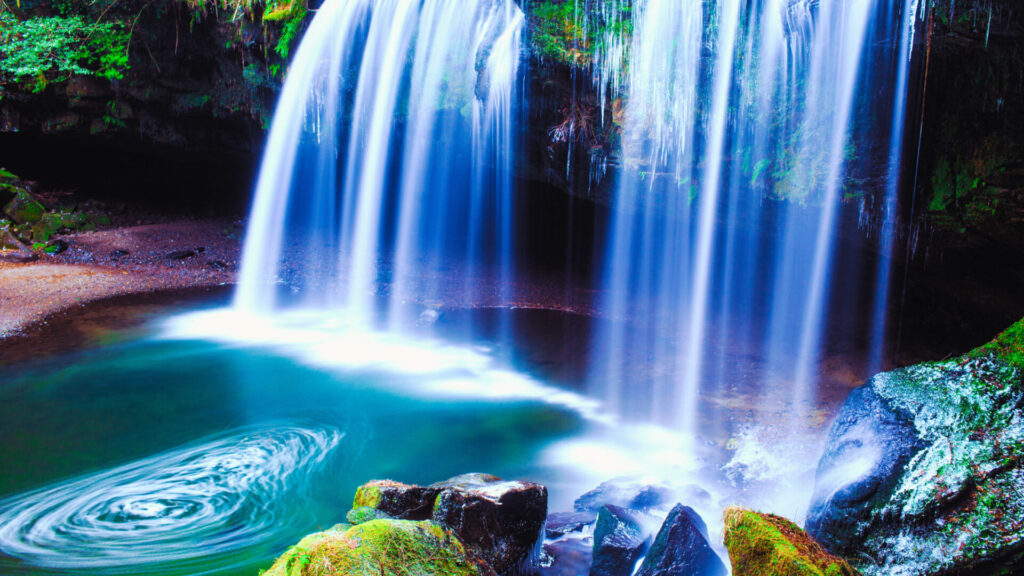
A Natural Horseshoe
And then, you arrive. Before you stand Nabegataki Falls, a sight that evokes awe and wonder, what sets this waterfall apart is its unique horseshoe shape, a rare geological feature that adds to its allure. Water tumbles over the edge, creating a delicate curtain that frames the lush surroundings with its gentle embrace. The falls are nestled within a rock arena, creating an intimate and enchanting atmosphere that transports you to a realm untouched by time.
A Serene Sanctuary
A serene atmosphere envelopes you as you take in the sight of Nabegataki Falls. The sounds of the forest and the soothing rush of water create a symphony of tranquility, inviting you to pause, reflect, and immerse yourself in the moment. The lush greenery surrounding the falls adds to the sense of seclusion, making you feel like you’ve stumbled upon a secret paradise known only to a fortunate few.
Nabegataki Falls is more than just a waterfall; it’s an invitation to step off the beaten path and into nature’s embrace. The journey to reach it is a pilgrimage through the forest, a voyage of discovery that culminates in a sight that leaves an indelible mark on your soul. As you stand before Nabegataki Falls, may you find solace in its serenity, inspiration in its beauty, and a deep connection to the untouched wilderness that defines Kyushu’s waterfalls.
The Enchanting Mystique of Mikaeri-no-Taki
In the heart of Japan’s lush landscapes, nestled amidst a tapestry of greenery, lies a hidden gem that beckons adventurers and nature enthusiasts alike. Mikaeri-no-Taki, or the “Looking Back Waterfall,” stands as a testament to the wonders of nature, captivating visitors with its mesmerizing cascade that seems to defy the laws of gravity. Let’s embark on a journey to uncover the enchanting mystique of Mikaeri-no-Taki.
The Illusion of Reversal
Mikaeri-no-Taki earns its intriguing name from the optical illusion it presents—an illusion that makes it appear as though the waterfall’s water is flowing backward. As you stand in awe of this natural spectacle, it’s easy to understand the fascination surrounding Mikaeri-no-Taki. The sight of water seemingly defying its natural descent creates a surreal and enchanting experience for all who venture to witness it.
Discovering Mikaeri’s Hidden Haven
Located in a serene and often remote part of Japan, Mikaeri-no-Taki invites visitors through unspoiled landscapes. The surrounding greenery provides a tranquil backdrop, and the soothing sound of cascading water adds to the overall sense of peace. The journey to Mikaeri is often as rewarding as the destination, with trails leading through picturesque forests and offering glimpses of local flora and fauna.
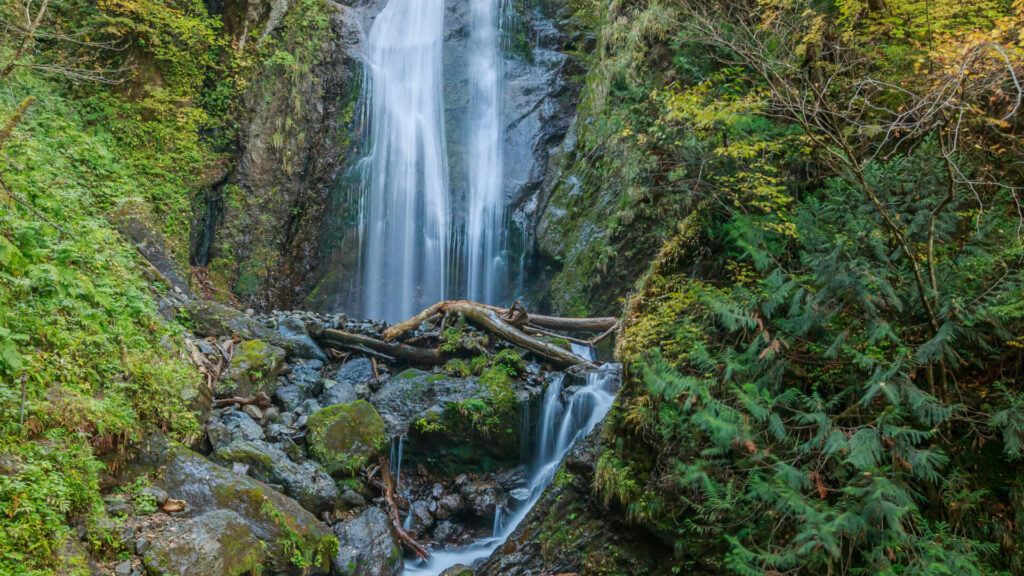
Capturing the Moment
For photography enthusiasts, Mikaeri-no-Taki is a canvas of inspiration. The unique visual illusion and the natural beauty of the surroundings create a captivating scene that begs to be captured on camera. Whether you’re a seasoned photographer or a casual snap-happy traveler, Mikaeri offers an array of angles and perspectives to immortalize the magic of the waterfall.
Responsible Exploration
Preserving the natural beauty of Mikaeri-no-Taki is of utmost importance. Visitors are encouraged to adhere to designated paths, minimizing their impact on the delicate ecosystem. As with any natural wonder, practicing responsible tourism ensures that future generations can also marvel at the enchantment of Mikaeri. Respecting the environment and local guidelines contributes to the sustainability of this captivating destination.
Embracing the Surrounding Serenity
Beyond the enchantment of the waterfall itself, Mikaeri invites travelers to immerse themselves in the surrounding serenity. Nearby villages often offer a glimpse into traditional Japanese culture, allowing one to experience local hospitality and cuisine. Consider extending your exploration beyond the waterfall, and you may discover additional treasures hidden within the embrace of nature.
A Journey into Nature’s Paradox
In conclusion, Mikaeri-no-Taki is more than a waterfall—it’s a testament to the paradoxes and wonders that nature can create. As you stand before the illusion of water, looking back upon itself, you become part of a timeless dance between gravity and beauty. Mikaeri invites you to a world where reality blurs, leaving you with a memory etched in the heart—a memory of a waterfall that defies gravity and captivates the soul.
GOROGA TAKI FALLS: A Hidden Gem in Nature’s Embrace
Escape the hustle and bustle of city life and immerse yourself in the breathtaking beauty of Goroga Taki Falls. Nestled in the captivating landscapes of Kyushu, this hidden gem promises a tranquil haven where the mesmerizing harmony of water and wilderness will leave you spellbound. Experience the perfect blend of nature’s allure and serenity with a visit to this enchanting destination.
Discovering Tranquility
Nestled in the serene terrain of Yamato, Goroga Taki Falls awaits you. As you trek through the winding trails that lead to the falls, an air of excitement envelops you, and the musical symphony of falling water gently beckons you forward. The journey towards Goroga Taki Falls is a venture into a haven of serenity, away from the outside world’s distractions.
A Symphony of Cascades
Its unique arrangement of cascades sets Goroga Taki Falls apart, creating a symphony of water gracefully descending through the landscape. The falls boast a multi-tiered design, with each level offering a distinct view of nature’s artistry. The interplay of light and water creates a mesmerizing dance, inviting visitors to immerse themselves in the rhythmic flow of this natural masterpiece.
Natural Harmony with the Surroundings
Goroga Taki Falls seamlessly integrates into the natural tapestry of Kyushu’s surroundings. The lush greenery, coupled with the invigorating freshness of the air, enhances the overall experience. The falls become a focal point of the landscape, contributing to the region’s intrinsic beauty and showcasing the harmonious relationship between water and wilderness.
Holistic Exploration
Beyond the visual spectacle, Goroga Taki Falls provides opportunities for exploration and contemplation. The trails leading to the falls invite visitors to engage with the natural surroundings, fostering a connection with the environment. The falls become more than a destination; they become a part of a holistic journey, encouraging mindful exploration and appreciation for the wonders of nature.
A Tapestry of Senses
The falling water echoes create a symphony that accompanies your exploration, and the cool mist from the cascades invigorates the senses. The falls become a sensory tapestry, weaving together the visual, auditory, and tactile elements into a harmonious experience.
Kyushu’s Goroga Taki Falls is a testament to the captivating allure of waterfalls. Escape the mundane and embrace the enchanting allure of nature’s wonders. Its stunning beauty is a siren call for curious travelers to explore uncharted territories and experience the magic that unfolds when we immerse ourselves in the natural world.
Discover the enchantment of Goroga Taki Falls and let it leave you in awe. Whether it’s the rhythmic dance of water or the tranquil surroundings, Goroga Taki Falls invites you to discover the profound beauty within Kyushu’s untouched corners.
The Majestic Harajiri Falls
Japan, known for its rich tapestry of natural wonders, is home to the breathtaking Harajiri Falls—a hidden gem that beckons travelers seeking both serenity and spectacle. Nestled amidst the verdant landscapes of Oita Prefecture, Harajiri Falls offers a refreshing escape from the hustle and bustle of city life. Let’s embark on a virtual journey to explore the charm and allure of this captivating waterfall.
A Natural Symphony
Harajiri Falls, also known as the Niagara of Japan, stands as a testament to the awe-inspiring beauty that nature can create. The Hiji River forms the waterfall as it plunges over a horseshoe-shaped cliff, creating a mesmerizing cascade that spans 120 meters wide. The symphony of rushing water, the rustling of leaves, and the crisp mountain air create an immersive and tranquil experience for all who venture into this natural wonder.
Scenic Surroundings
One of the unique aspects of Harajiri Falls is its serene and unspoiled surroundings. The waterfall is embraced by lush green foliage, creating a picturesque setting that changes with the seasons. Cherry blossoms paint the landscape in hues of pink in spring, while vibrant autumn colors transform the scene into a canvas of reds, oranges, and yellows during the fall. The changing seasons ensure that each visit to Harajiri Falls is a unique and enchanting experience.
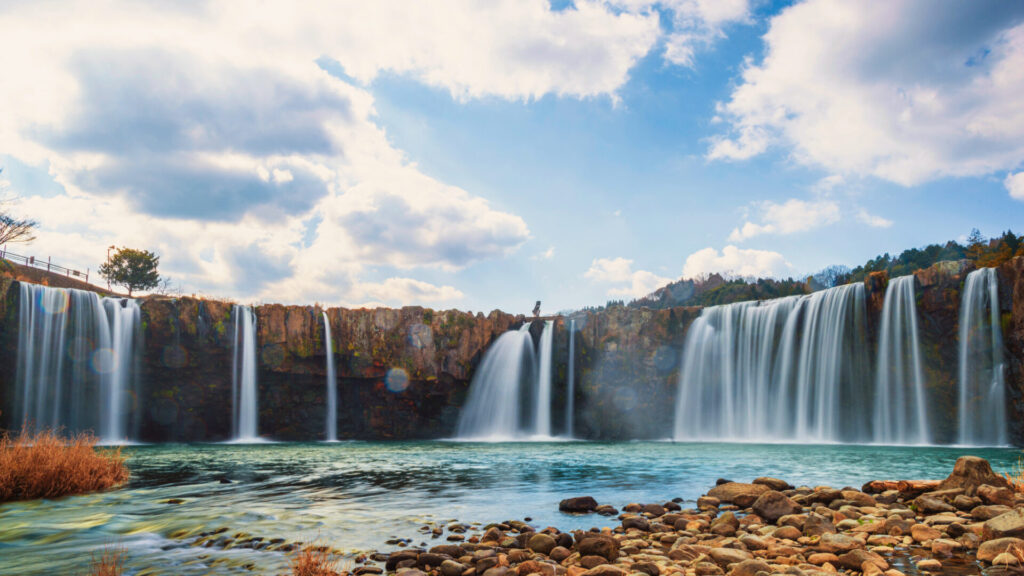
The Journey to Harajiri
Reaching Harajiri Falls is an adventure in itself. Visitors can follow well-maintained trails that wind through the pristine forests, providing glimpses of the surrounding nature and creating a sense of anticipation as the sound of cascading water grows louder. The journey is accessible to all levels of hikers, making it a perfect destination for both seasoned trekkers and those looking for a stroll.
A Haven for Nature Enthusiasts
Harajiri Falls is a visual delight and a haven for nature enthusiasts. The surrounding area is home to diverse flora and fauna, and keen-eyed observers may spot various bird species and butterflies fluttering around the vibrant flowers. The Oita Prefecture is committed to preserving the region’s ecological balance, making it an ideal destination for those who appreciate the importance of responsible tourism.
Embracing Local Culture
Adjacent to Harajiri Falls, travelers can explore the nearby villages and experience the local culture. Traditional ryokans, or Japanese inns, offer a chance to immerse oneself in the warmth of local hospitality, and local cuisine showcases the region’s flavors. The combination of natural beauty and cultural richness makes Harajiri Falls a holistic and enriching destination.
Preserving the Beauty
As with any natural wonder, the conservation of Harajiri Falls is paramount. Visitors are encouraged to follow designated paths, refrain from littering, and respect the natural habitat to ensure the longevity of this pristine location. Responsible tourism plays a crucial role in preserving the beauty and integrity of Harajiri Falls for future generations.
The Majestic Aesthetics of Kyushu’s Waterfalls
Kyushu’s landscape is a canvas painted with waterfalls of diverse shapes and sizes, each telling its own story of nature’s artistry. These cascades of water captivate our senses and hold a special place in Japanese culture, history, and visual allure.
A Symphony of Diversity
Kyushu’s waterfalls span a spectrum of forms – from the delicate wisps of water that gracefully descend over rocky ledges to the thunderous torrents that crash with resounding power. Some waterfalls are like sheer curtains, while others are like majestic sculptures carved by centuries of erosion. The varying heights, volumes, and surrounding landscapes create a symphony of diversity that enthralls all who seek their beauty.
Cultural Significance
Waterfalls have deep-rooted significance in Japanese art, literature, and culture. They often symbolize the transient nature of life, capturing a moment in time before flowing onwards. In Japanese mythology, spirits inhabit waterfalls and are considered gateways to the supernatural. The sight and sound of falling water have long inspired poets, painters, and artisans, infusing their creations with the essence of flowing life.
Capturing Nature’s Poetry
Each waterfall in Kyushu possesses a distinct personality, offering a feast for the eyes and an opportunity for contemplation. The juxtaposition of water, rocks, and foliage creates an intricate dance of textures and colors. From the ethereal mist surrounding Takachiho Falls to the intimate embrace of Nabegataki Falls’ horseshoe shape, these natural wonders embody the poetry of nature itself.
A Visual Delight
In the age of social media, the photogenic qualities of Kyushu’s waterfalls are undeniable. The delicate balance of sunlight filtering through leaves, the mist catching the light, and the vibrant greens framing the falls all contribute to captivating visuals. Each waterfall offers a tableau that beckons photographers and enthusiasts to capture the transient beauty of water meeting rock in a frozen moment.
Kyushu’s waterfalls are more than breathtaking sights; they are living art forms that speak to the soul. As we witness these spectacular natural phenomena, the force and magnificence of nature humbles us, and we realize our intimate bond with the environment surrounding us.
The passing of time is also evident in these wonders, adding to their awe-inspiring qualities. Whether admired for their cultural significance, their visual appeal, or the emotions they evoke, Kyushu’s waterfalls are an enduring testament to the artistry of the Earth itself.
The Natural Ecosystem Surrounding the Waterfalls
Beyond their captivating beauty, Kyushu’s waterfalls create a haven for many flora and fauna, shaping intricate ecosystems that thrive nearby. These lush surroundings contribute to the allure of the waterfalls and play a vital role in supporting biodiversity and offering a space of tranquility and mindfulness.
A Symphony of Life
The area surrounding Kyushu’s waterfalls is a playground for nature’s wonders. From delicate ferns to resilient mosses, diverse plant species find a home in the moist and nourishing environment created by the constant water flow. Birds and insects are drawn to these oases, creating a symphony of life that harmonizes with the soothing sound of falling water.
Microclimates of Abundance
Waterfalls are architects of microclimates, creating unique conditions that differ from their surroundings. The mist generated by cascading water enriches the air with moisture, supporting a thriving community of plants that have adapted to thrive in this environment. The cooler air around waterfalls can also create temperature variations, further shaping the types of life that can flourish nearby.
Biodiversity Hotspots
Waterfalls act as magnets for life, offering sustenance and shelter to various species. Insects are drawn to the moist surfaces, becoming a feast for the birds that frequent the area. Amphibians, such as frogs and salamanders, find refuge in the calm waters and damp crevices. The balance of predator and prey creates a complex web of life that contributes to the ecosystem’s overall health.
Mindfulness and Relaxation
The tranquil atmosphere around waterfalls calms visitors, inviting them to slow down and immerse themselves in the natural world. The gentle rush of water and the rustle of leaves become a soothing melody that washes away the stresses of modern life. Being present in this environment can promote mindfulness and relaxation, fostering a deeper connection to nature and oneself.
Kyushu’s waterfalls are not just solitary features but heartbeats of thriving ecosystems that have evolved. As we stand before these cascades, we become witnesses to the intricate dance of life that unfolds around them. The interplay between water, plants, animals, and humans creates a harmonious symphony that resonates with the essence of nature’s beauty and vitality.
Waterfall Chasing: A Memorable Adventure
Pursuing Kyushu’s breathtaking waterfalls is not just a journey; it’s an exhilarating adventure that promises unforgettable memories and awe-inspiring encounters. To make the most of your waterfall exploration in Kyushu, here are some tips, guidelines, and personal insights to consider:
Planning Your Expedition
- Research and Choose: Kyushu has numerous waterfalls, each with a unique charm. Research different options and choose the waterfalls that resonate with you. Consider factors like accessibility, hiking difficulty, and the overall experience.
- Weather and Seasons: Check the weather forecast and consider the best seasons for visiting. Spring and early summer can offer lush surroundings, while autumn showcases a riot of colors.
- Physical Preparedness: If you plan on visiting waterfalls, hiking or walking may be required to reach them. It is essential to wear suitable clothing and footwear to be well-prepared for the journey.
Respect and Conservation
- Leave No Trace: Practice responsible tourism by adhering to Leave No Trace principles. Carry out all waste, respect the environment, and avoid disturbing wildlife.
- Stay on Designated Paths: Stick to established trails and paths to minimize your impact on the delicate ecosystems around waterfalls.
- Respect Signs and Regulations: Follow any posted signs and guidelines for safety and conservation. Some waterfalls might have restricted access during certain times or for specific reasons.
Personal Connections and Experiences
- Connect with Locals: Engage with locals or guides who know the area well. They can provide valuable insights, stories, and hidden gems you might not find in guidebooks.
- Capture the Moments: Bring a camera or smartphone to capture the stunning visuals. Take your time to compose shots that reflect the beauty and atmosphere of each waterfall.
- Immerse Yourself: Take moments to stand and absorb the surroundings simply. Close your eyes and listen to the symphony of nature—water, wind, birdsong. These are the moments that create lasting memories.
A Personal Reflection
During my waterfall-chasing adventures in Kyushu, I found myself enchanted not only by the cascading waters but also by the journey itself. Hiking through lush forests, crossing bridges that spanned crystal-clear streams, and finally reaching the crescendo of each waterfall—it was a symphony of exploration and discovery. Each waterfall had its unique character, story, and magic to share.
As I stood before the falls, the mist kissing my skin and the sound of rushing water echoing in my ears, I felt a profound connection to nature. With their ceaseless motion and raw energy, waterfalls reminded me of the beauty and power of the natural world.
And in those moments, I realized that waterfall chasing in Kyushu was more than an adventure; it was a journey of the heart, an invitation to experience the world in all its wonder and majesty.
Capturing the Beauty: Photography Tips
Photographing waterfalls in Kyushu is rewarding, allowing you to immortalize the awe-inspiring beauty of these natural wonders. To help you capture stunning waterfall photographs, here are some photography tips and insights:
Choosing the Right Time
- Golden Hours: Aim to photograph waterfalls during the golden hours—the first hour after sunrise and the last hour before sunset. The soft, warm light enhances the waterfall’s features and creates a magical atmosphere.
- Overcast Days: When the sky is cloudy or overcast, the light is scattered, reducing the visibility of strong shadows and highlights. This natural phenomenon is particularly advantageous when capturing photographs of waterfalls illuminated by filtered sunlight.
Composing Your Shots
- Angles and Perspectives: Experiment with various angles and perspectives to find the most captivating composition. Try shooting from different heights—low angles to capture the power of the water and higher angles to showcase the surrounding landscape.
- Foreground Elements: Incorporate foreground elements, such as rocks, plants, or fallen leaves, to add depth and context to your photographs.
- Leading Lines: Utilize natural lines like streams or tree branches to guide the viewer’s eye toward the waterfall.
Camera Settings
- Shutter Speed: Using a slower shutter speed to capture the flowing water with a silky effect (e.g., 1/4 to 1 second). Longer shutter speeds result in more pronounced water motion.
- Aperture: A smaller aperture (higher f-number), like f/11 to f/16, will provide a greater depth of field, ensuring the waterfall and its surroundings are in focus.
- ISO: Maintain a low ISO (100-400) to prevent noise in your images, especially in well-lit conditions.
Equipment and Accessories
- Tripod: A sturdy tripod is essential for longer exposures, ensuring your photos are sharp and free from camera shake.
- Polarizing Filter: A polarizing filter helps reduce glare and reflections from the water’s surface, enhancing the color and details in your images.
- Remote Shutter Release: A remote shutter release or the timer function helps minimize camera shake during longer exposures.
Inspiration from Kyushu’s Waterfalls
Imagine standing before Minainotaki Waterfall as the first rays of the sun illuminate the cascading water, turning it into a sparkling veil of diamonds. The gentle mist brushes your cheeks, and you compose the shot to capture the play of light and shadow. The result is a photograph that encapsulates the enchantment of the moment, inviting viewers to share the scene’s magic.
You must visit Nabegataki Falls! It’s a stunning location, with a breathtaking horseshoe-shaped waterfall nestled amidst the most lush and verdant greenery you’ve ever seen. You position your camera at the pool’s edge, capturing the falls’ reflection in the calm water below. The resulting image transports viewers to the tranquil heart of the forest.
As you explore Harajiri falls, you take advantage of the surrounding onsen town’s unique ambiance. The multi-tiered falls become a backdrop to the soothing onsen experience, juxtaposing the dynamic energy of the water with the serenity of relaxation.
These are the moments that photography allows us to relive and share. With patience, creativity, and the proper techniques, you can capture the breathtaking beauty of Kyushu’s waterfalls and bring their magic to life through your lens.
Immerse Yourself in the Waterfall Experience
Exploring Kyushu’s magnificent waterfalls is about admiring their beauty from a distance and immersing yourself in the whole experience. Here are some ways to make the most of your waterfall adventures and create unforgettable memories:
Outdoor Activities to Complement Waterfall Exploration
- Hiking Trails: Many waterfall sites offer hiking trails leading you through lush forests, babbling streams, and the majestic falls. The journey becomes part of the experience, allowing you to connect with nature profoundly.
- Picnicking: Pack a delicious picnic and enjoy a leisurely meal surrounded by the soothing sounds of cascading water. Find a quiet spot with a view of the waterfall, and let the serene atmosphere enhance your dining experience.
- Swimming and Wading: If the waterfall and its surroundings allow, consider taking a refreshing dip in the calm waters below the falls. Just be sure to check for safety precautions and follow local guidelines.
Engaging with Local Communities
- Cultural Insights: Get involved with nearby communities and explore their profound relationship with waterfalls. Uncover the myths, customs, and narratives linked to these magnificent marvels, increasing your knowledge of their cultural importance.
- Guided Tours: Join guided tours led by knowledgeable locals who can provide insights into the waterfalls’ history, geology, and ecological importance. These tours often include interesting anecdotes and behind-the-scenes information.
Connecting with Nature on a Deeper Level
- Mindfulness and Reflection: Waterfalls have a meditative quality that encourages mindfulness. Sit quietly by the falls, listening to the soothing sounds and allowing yourself to be fully present in the moment.
- Photography and Art: Use the waterfall’s natural beauty to inspire photography, sketching, or journaling. Capturing the essence of the waterfall through your artistic lens can deepen your appreciation for its allure.
- Environmental Awareness: As you witness the power and grace of waterfalls, reflect on the importance of preserving these natural treasures for future generations. Consider how your experiences can inspire you to become an advocate for conservation and sustainable practices.
Imagine yourself standing beside a waterfall, feeling the spray on your face, and listening to the symphony of nature. As you explore hiking trails, savor picnics, and engage with locals, you’re not just witnessing these waterfalls—you’re becoming a part of their story. Through these activities, you’ll create cherished memories and develop a profound connection with Kyushu’s awe-inspiring waterfalls.
Kyushu’s waterfalls are not mere attractions but gateways to nature’s most enchanting secrets. As we conclude this journey through the island’s mesmerizing landscapes, let’s take a moment to reflect on the captivating beauty and profound significance of Kyushu’s waterfalls.
A Tapestry of Nature’s Artistry
From the ethereal Takachiho Falls to the hidden oasis of Nabegataki Falls and the multi-tiered marvel of Kurokawa Falls, each waterfall we’ve explored tells a unique tale. These natural wonders are not just spectacles for the eyes but invitations to experience nature’s raw power and tranquility in its purest form.
An Oasis of Tranquility
Kyushu’s waterfalls offer more than just visual delights; they provide a retreat from the hustle and bustle of everyday life. The serenity that envelopes you as you stand before a waterfall is a rare gift, a chance to pause, reflect, and find solace in the embrace of nature.
An Invitation to Explore
We trust that this guide has sparked your curiosity and motivated you to explore the mesmerizing waterfalls nestled in the beautiful region of Kyushu. Whether you’re an avid hiker, a photography enthusiast, or simply seeking a connection with nature, these waterfalls offer an experience like no other.
Preserving Nature’s Treasures
While we revel in the beauty of Kyushu’s waterfalls, let’s also remember the importance of responsible travel and sustainable tourism. By treading lightly, respecting local guidelines, and embracing Leave No Trace principles, we can ensure that these natural wonders remain untouched for generations.
Kyushu’s waterfalls are not just destinations; they are invitations to marvel, meditate, and connect with the world around us. So, pack your hiking shoes, grab your camera, and embark on a journey to witness the awe-inspiring beauty of Kyushu’s waterfalls. May your adventures be filled with wonder, tranquility, and a renewed appreciation for the untouched beauty of nature.
How To Get There
Harajiri Falls
| City | Mode | Route | Time | Cost Range (One Way) | Destination |
|---|---|---|---|---|---|
| Osaka | Air/Bus/JR/Car | Flight to Oita Airport, bus to JR Oita Station, train to JR Ogata Station, and taxi or walk to Harajiri Falls | ~3.5 hrs + Taxi/Walk time | Air/Bus/JR: ¥10,000 – ¥20,000; Taxi/Walk: Varies | Harajiri Falls |
| Tokyo | Air/Bus/JR/Car | Flight to Oita Airport, bus to JR Oita Station, train to JR Ogata Station, and taxi or walk to Harajiri Falls | ~5 hrs + Taxi/Walk time | Air/Bus/JR: ¥15,000 – ¥30,000; Taxi/Walk: Varies | Harajiri Falls |
| Nagoya | Air/Bus/JR/Car | Flight to Oita Airport, bus to JR Oita Station, train to JR Ogata Station, and taxi or walk to Harajiri Falls | ~4.5 hrs + Taxi/Walk time | Air/Bus/JR: ¥12,000 – ¥25,000; Taxi/Walk: Varies | Harajiri Falls |
GorogaTaki Falls
| City | Mode | Route | Transit Time | Cost Range (One Way) | Destination |
|---|---|---|---|---|---|
| Tokyo | Train | Tokyo Station to Kumamoto Station, then bus | Approx. 9 hrs (Shinkansen + Bus) | Shinkansen: ¥20,000 – ¥25,000; Bus: ¥2,000 | Goroga Taki Falls, Kumamoto |
| Bus | Tokyo to Kumamoto, then local bus | Approx. 12 hrs (Bus) | Bus: ¥10,000 – ¥15,000 | Goroga Taki Falls, Kumamoto | |
| Car | Drive from Tokyo | Approx. 15 hrs (Car) | Fuel and toll costs vary | Goroga Taki Falls, Kumamoto | |
| Osaka | Train | Osaka Station to Kumamoto Station, then bus | Approx. 6 hrs (Shinkansen + Bus) | Shinkansen: ¥15,000 – ¥20,000; Bus: ¥2,000 | Goroga Taki Falls, Kumamoto |
| Bus | Osaka to Kumamoto, then local bus | Approx. 9 hrs (Bus) | Bus: ¥8,000 – ¥12,000 | Goroga Taki Falls, Kumamoto | |
| Car | Drive from Osaka | Approx. 8 hrs (Car) | Fuel and toll costs vary | Goroga Taki Falls, Kumamoto | |
| Nagoya | Train | Nagoya Station to Kumamoto Station, then bus | Approx. 7 hrs (Shinkansen + Bus) | Shinkansen: ¥18,000 – ¥23,000; Bus: ¥2,000 | Goroga Taki Falls, Kumamoto |
| Bus | Nagoya to Kumamoto, then local bus | Approx. 10 hrs (Bus) | Bus: ¥8,000 – ¥12,000 | Goroga Taki Falls, Kumamoto | |
| Car | Drive from Nagoya | Approx. 9 hrs (Car) | Fuel and toll costs vary | Goroga Taki Falls, Kumamoto |
Nabegataki Falls
| City | Mode | Route | Time | Cost Range (One Way) | Destination |
|---|---|---|---|---|---|
| Osaka | Train/Bus/Car | Train to Nabegataki + Bus | ~5 hrs | Train: ¥5,000 – ¥9,000; Bus: ¥2,500 – ¥6,000; Car: Varies | Nabegataki Falls |
| Tokyo | Shink./Train/Bus/Car | Shink. to Kumamoto + Bus/Car | ~6 hrs + ~1 hr | Shink.: ¥18,000 – ¥24,000; Bus: ¥2,000 – ¥5,000; Car: Varies | Nabegataki Falls |
| Nagoya | Train/Bus/Car | Train to Nabegataki + Bus | ~5 hrs | Train: ¥5,000 – ¥9,000; Bus: ¥2,500 – ¥6,000; Car: Varies | Nabegataki Falls |
Mikaeri-no-Taki Waterfall
| Origin City | Mode of Transport | Route | Estimated Time | Cost | Destination |
|---|---|---|---|---|---|
| Tokyo | Train | Tokyo to Hakata to Saga to Karatsu | 5h 49m (Tokyo to Saga) + 1h 16m (Saga to Karatsu) | ¥25174 – ¥33944 (Tokyo to Saga) + ¥850 – ¥1200 (Saga to Karatsu) | Mikaeri-no-Taki Waterfall |
| Tokyo | Bus | Tokyo to Hakata to Saga to Karatsu | 17h 55m (Tokyo to Saga) + 1h 37m (Saga to Karatsu) | ¥10778 – ¥25683 (Tokyo to Saga) + ¥950 – ¥1400 (Saga to Karatsu) | Mikaeri-no-Taki Waterfall |
| Tokyo | Car | Tokyo to Saga to Karatsu | 12h 37m (Tokyo to Saga) + 41 min (Saga to Karatsu) | ¥18000 – ¥27000 (Tokyo to Saga) + ¥850 – ¥1300 (Saga to Karatsu) | Mikaeri-no-Taki Waterfall |
| Osaka | Train | Osaka to Hakata to Saga to Karatsu | 2h 30m (Osaka to Saga) + 1h 16m (Saga to Karatsu) | Not available + ¥850 – ¥1200 (Saga to Karatsu) | Mikaeri-no-Taki Waterfall |
| Osaka | Bus | Not available | Not available | Not available | Mikaeri-no-Taki Waterfall |
| Osaka | Car | Not available | Not available | Not available | Mikaeri-no-Taki Waterfall |
| Nagoya | Train | Nagoya to Hakata to Saga to Karatsu | 4h 7m (Nagoya to Saga) + 1h 16m (Saga to Karatsu) | ¥18205 – ¥24804 (Nagoya to Saga) + ¥850 – ¥1200 (Saga to Karatsu) | Mikaeri-no-Taki Waterfall |
Minainotaki Waterfall
| City | Mode | Route | Time | Cost Range (One Way) | Destination |
|---|---|---|---|---|---|
| Osaka | Train/Bus/Car | Train to Takachiho + Bus | ~5.5 hrs | Train: ¥5,000 – ¥9,000; Bus: ¥2,500 – ¥6,000; Car: Varies | Minainotaki Waterfall |
| Tokyo | Shink./Train/Bus/Car | Shink. to Kumamoto + Bus/Car | ~7 hrs + ~1 hr | Shink.: ¥18,000 – ¥24,000; Bus: ¥2,000 – ¥5,000; Car: Varies | Minainotaki Waterfall |
| Nagoya | Train/Bus/Car | Shink. to Kumamoto + Bus/Car | ~6 hrs + ~1 hr | Shink.: ¥14,000 – ¥20,000; Bus: ¥2,000 – ¥5,000; Car: Varies | Minainotaki Waterfall |
- The Best Waterfalls in Kyushu: Enjoying the Island’s Natural Beauty
- The Best Parks in Tokyo That Will Amaze You
- “Top of the World: Mystical Summit Experience Of Mount Fuji”
- “Kumamoto Serenity: Unmasking The Secrets Of Its Natural Wonders”
- The Best Beach Resorts in Shikoku
Otsuka Museum of Art| Tokushima Sue board masterpiece Museum in Naruto (o-museum.or.jp)















